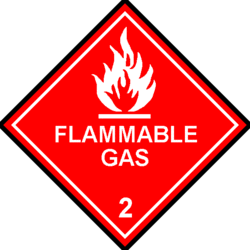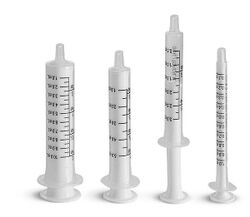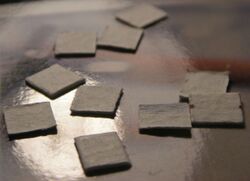UserWiki:LockPicker/Drafts/Volumetric liquid dosing
This guide is provided for informational and educational purposes only. We do not encourage you to break the law and cannot claim any responsibility for your actions. |
Volumetric dosing is the process of dissolving a compound in a liquid to make it easier to measure. In the interest of harm reduction, it is important to use volumetric dosing with certain compounds that are too potent to measure with traditional weighing scales. This technique makes it possible to use a rather cheap scale and still measure accurately.[1]
Many psychoactive substances, including certain benzodiazepines, opioids and psychedelics are active at less than a single milligram. Such small quantities cannot be accurately measured with common digital scales, so the substance must instead be dosed volumetrically by weighing out larger amounts of the compound and dissolving it in a calculated volume of a suitable liquid. The solution is either consumed directly or evaporated on a substrate.
Materials
- Milligram scale
- Solvent, such as distilled water, alcohol, acetone, propylene glycol or glycerine
- Search the internet to determine what solvent to use. Alcohol has the advantage that it has disinfecting properties but may interact with the dissolved substance when administered. Make sure that the solvent you chose is safe for the intended route of administration or let it evaporate on a substrate.
- Sealed storage bottle or container
- The solution may degrade with exposure to light and heat. You may use amber glass bottles or store it in the refrigerator to minimize this exposure.
- Paper, tape and a writing utensil to label the bottle
- Liquid measurement device, such as a syringe, graduated cylinder, measuring pipette, eyedropper or measuring cup
- You can also use the milligram scale to weigh out the solution. Please consider the density if you did not choose water as the solvent.
- Substrate, such as plant material, blotters or sugar cubes (optional)
Solvent
Certain psychoactive substances are practically insoluble in water, but will dissolve at various concentrations in other easy-to-acquire solvents, such as alcohol (clear high-proof alcohol works best), propylene glycol, or glycerine. However, even when added to the correct solvent type the solution may need a mild hot water bath or agitation (shaking or stirring) to get a homogeneous solution. A hot water bath involves placing the substance container into a bigger container with hot water inside of it. This heats up the solution in the container so that it may dissolve better. Do not use an open flame and provide adequate ventilation when using a hot water bath with a flamable solvent. The substance may precipitate out of the solution and the process of light heat/agitation may need to repeated again. Always check your solutions for precipitates before using it.
A suitable concentration depends on the solvent, the solubility and the way of administration. If you only have an measuring cup or your milligram scale, a low concentration is reccomended to measure it accurately. If your solvent is toxic you will have to evaporate it on a suitable substrate. When usingreccomended
The first important consideration is the maximum concentration at which your chosen solvent will dissolve your product. A value can usually be found with minimal effort on the internet, using a search term like <material> <solvent> solubility
Alcohol in particular is mixable with many solvents; Just a few drops is enough to increase the maximum concentration of some compounds dramatically, when using water as the major component.
Adding a small amount of acid to certain solutions can also increase the solute's solubility.
Measurement
There is a volumetric dosing calculator located here which will determine the amount of the substance and solvent needed, as well as the concentration.
Powder
It is vital to weigh the amount of powder that you want to volumetrically dose with a milligram scale first. Even if the weight is on the bag itself, do not assume that the vendor has given you a certain amount of a substance; it is not uncommon for vendors to give more product than is labelled. If one believes they received 500mg, but actually received 1000mg, then the liquid solution will be twice as strong as expected.
Emptying a bag of a substance into a container with solvent may leave small amounts in the bag. To account for this, begin by weighing your bag with the substance in it and note the reading on the scale, transfer the contents into your solution, then weigh the bag again. The difference between these weights is the amount of substance you've placed in the solution. For example, if your initial weight is 2000mg, and after transferring the substance the weight of the bag is now 750mg, you've transferred 1250mg of substance.
To achieve a concentration of 10mg/1ml, measure the weight of material in milligrams, then divide the value by 10. So for 1000mg material, 100ml of solvent will be required. It is safest to use the lowest concentration possible, preferably 1mg/1mL or less for very potent substances active in the 1mg range.
Liquid
For best accuracy, an oral syringe should be used to measure the calculated volume of liquid. You may also use other measuring tools, such as a syringe with a needle, graduated cylinder, eyedropper, measuring pipette, or measuring cups.
| Solvent | Density (g/ml) |
|---|---|
| Acetone | 0.785 |
| Isopropyl alcohol | 0.785 |
| Ethanol (95%) | 0.799 |
| Ethanol (60%) | 0.873 |
| Ethanol (40%) | 0.914 |
| Water | 0.998 |
| Propylene glycol | 1.037 |
| Glycerine | 1.265 |
This chart is only accurate for weak solutions, the higher the concentration the more inaccurate it gets.
Dissolution
After weighing the material, calculating the concentration, and measuring the required volume of solvent, add the liquid to a suitable container, then carefully mix in the compound. Seal tightly, then mix thoroughly by shaking the container vigorously.
To aid in dissolution, the container can be placed in a heat bath to warm it up. After a while, the solvent will become less viscous and can be mixed more thoroughly. Be vigilant of the amount of heat used in the hot water bath because boiling water may break down some chemical compounds.
Some chemicals need the aid of an acid to dissolve in water. Weak acids such as white vinegar or even citric acid are both valid options, but food grade acetic acid (vinegar) would be the most sterile way of adding an acid into the solution.
Storage
- Avoid exposure to direct sunlight or heat
- Label the container with contents and concentration
- Keep in a safe place away from children
- Periodically check the solution for homogeneity; there should be no particulate matter precipitating out on the bottom of the bottle. The solution should be evenly mixed and homogeneous.
Evaporation
Plant matter
Evoporation on plant matter is needed in order to make a smokable mixture. Common substrates inculde damiana, tobacco and herbal smoking blends.
Ideally you chose a ratio that makes it easy to dose, for example 5 g of plant material and 10 ml of 0.05 g/ml solution, this will give you a mixture that contains 0.1 g of active compound per 1 g of plant matter. Adjust the quantities to the potency of your compound. Make sure to use enough solvent to cover the material completely.
The mixture is ready to consume when the solvent has evaporated completely.
Blotter or sugar cubes
The best dosage
See also
External links
- Liquid measurement guide (Erowid)
- Guide to volumetric dosing (Reddit)
- Volumetric dosing tool (TripSit)
References
- ↑ "Zam" (January 2001). "Liquid Measurement Technique". Erowid. Retrieved September 20, 2020.


